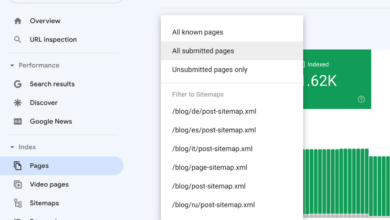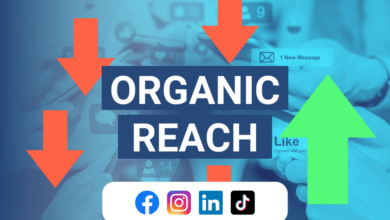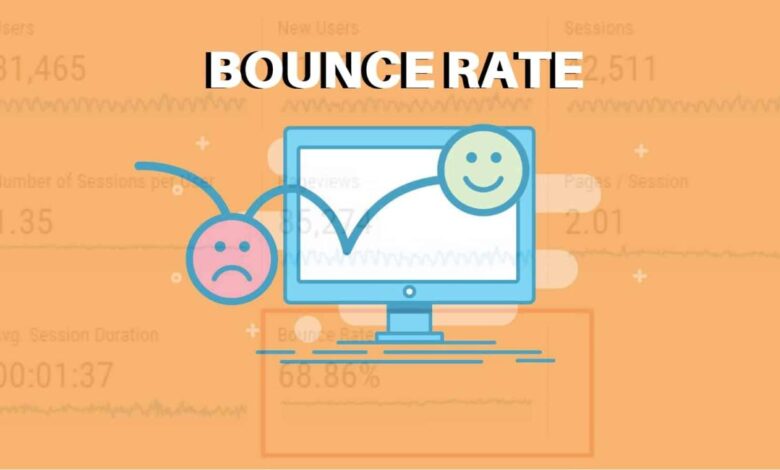
Bounce Rate Your Websites Secret Visitor Signals
Bounce rate is a critical metric for understanding how visitors interact with your website. It measures the percentage of visitors who leave after viewing only one page. This seemingly simple statistic reveals a wealth of information about user experience, content quality, and website performance. High bounce rates can indicate issues with your website’s design, navigation, or even the relevance of your content.
Understanding bounce rate is key to optimizing your website and improving user engagement.
This in-depth exploration delves into the intricacies of bounce rate, from its definition and calculation to the strategies for reducing it. We’ll examine the various factors influencing bounce rate, from design elements to content optimization, and provide actionable insights for improving your website’s performance.
Defining Bounce Rate
Bounce rate is a crucial metric in web analytics, reflecting the percentage of visitors who leave a website after viewing only one page. Understanding this metric is vital for optimizing website design, content, and user experience. A high bounce rate can signal issues with the website’s effectiveness in engaging users, while a low bounce rate suggests that visitors are finding the site valuable and engaging.A high bounce rate often indicates that the website’s initial content or landing page is not effectively attracting or retaining visitors.
This could stem from poor page design, irrelevant content, or a lack of clarity in what the site offers. Conversely, a low bounce rate suggests that the website is successfully capturing user interest and guiding them through the site.
Bounce Rate Definition
Bounce rate is the percentage of single-page visits (i.e., visits in which the visitor views only one page on the website) to a website. It’s calculated by dividing the number of single-page visits by the total number of visits, and then multiplying the result by 100. A single-page visit is a session that involves only one page view.
Key Components of Bounce Rate Calculation
The calculation of bounce rate hinges on two key elements: the number of single-page visits and the total number of visits. The single-page visit represents a user who arrives at the website, views only one page, and then leaves. The total number of visits encompasses all sessions, including those that involve multiple page views. Understanding the specific actions of the user within the session is crucial.
Bounce Rate vs. Other Website Metrics
Bounce rate differs from other website metrics such as session duration and pages per session. While bounce rate focuses solely on single-page visits, session duration measures the average time spent on the website per visit, and pages per session quantifies the average number of pages viewed per visit. These metrics provide a more comprehensive picture of user behavior.
For instance, a high bounce rate might be offset by a long session duration on the few pages viewed, suggesting users find the single page highly engaging. Conversely, a low bounce rate could correlate with short session duration, indicating a need to improve user engagement on subsequent pages.
Bounce Rate Across Different Website Types
Bounce rates vary significantly depending on the type of website. For example, e-commerce websites often have higher bounce rates than blog websites. This is because e-commerce sites often require more than one page view to complete a purchase, while blog posts are designed to be read in their entirety. Landing pages, designed to elicit a specific action, also have varying bounce rates depending on the action.
The action itself and its clear presentation greatly impact bounce rate. A landing page designed for lead generation will have a different bounce rate than one promoting a product sale.
Comparison of Bounce Rate Interpretations
| Interpretation | Description | Example |
|---|---|---|
| High Bounce Rate (e.g., >70%) | Indicates potential issues with site content, design, or user experience. | A landing page for a new software product with a complex call-to-action might have a high bounce rate. |
| Moderate Bounce Rate (e.g., 40-70%) | Suggests that the website is engaging but could be improved. | A blog post on a niche topic with compelling content but without internal links might have a moderate bounce rate. |
| Low Bounce Rate (e.g., <40%) | Indicates a successful user experience and website engagement. | A highly-rated e-commerce site with a clear product catalog and streamlined checkout might have a low bounce rate. |
Bounce rate is a valuable metric, but it should be considered alongside other engagement metrics. It’s not a standalone indicator of website success.
Factors Influencing Bounce Rate
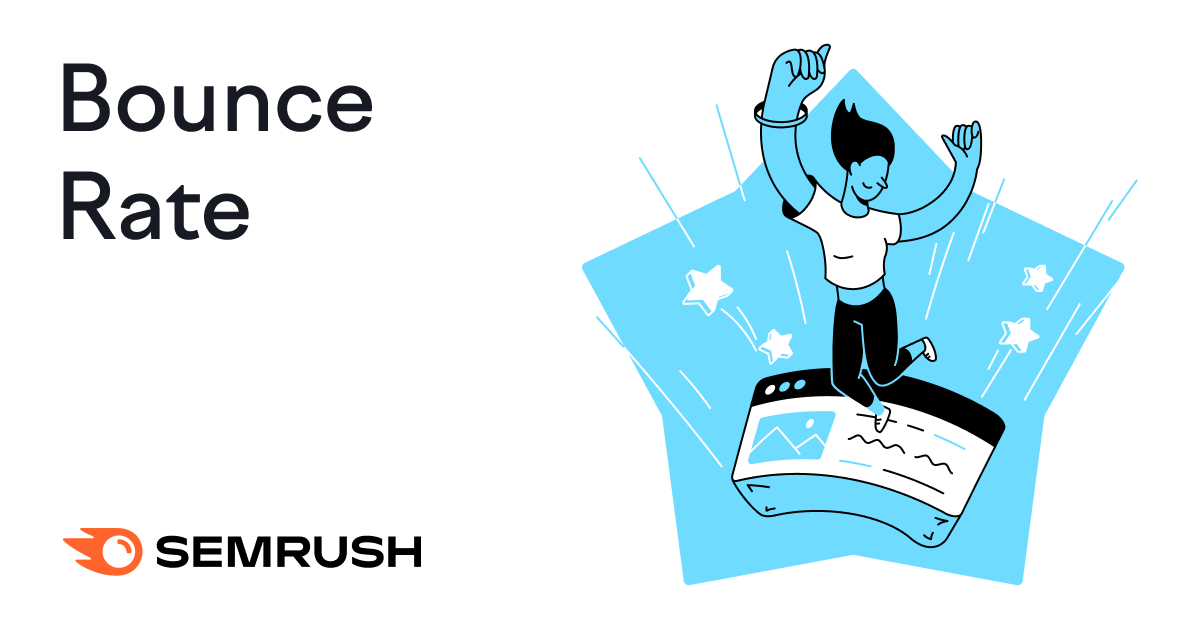
Bounce rate, a crucial metric for website performance, reveals the percentage of visitors who leave a website after viewing only one page. Understanding the factors contributing to high bounce rates is vital for improving user experience and ultimately driving conversions. A high bounce rate often indicates problems with website design, content, or technical aspects, necessitating careful analysis and strategic adjustments.High bounce rates typically signify a disconnect between user expectations and the website’s offerings.
High bounce rates can be a real pain for any website, indicating users aren’t engaging with your content. Fortunately, good content marketing software like content marketing software can help. By creating compelling content and optimizing for different user journeys, you can keep visitors on your site longer and reduce that frustrating bounce rate.
Visitors might quickly leave if they can’t find what they’re looking for, if the site is slow, or if the design is confusing. Identifying and addressing these underlying causes can significantly improve the website’s effectiveness and user engagement.
Website Design and User Experience
Website design plays a pivotal role in determining a user’s initial impression and their likelihood of staying on a site. A poorly designed site, with confusing navigation, irrelevant content, or an unattractive aesthetic, will likely result in high bounce rates. Intuitive navigation, clear calls to action, and an aesthetically pleasing layout are crucial elements for enhancing user experience and encouraging visitors to explore further.
Content Quality and Relevance
Content quality directly impacts user engagement. Irrelevant, poorly written, or outdated content can quickly discourage visitors. High-quality, informative, and engaging content that addresses user needs is essential for keeping visitors on a site. This includes well-structured content, clear headings, concise paragraphs, and compelling visuals.
Bounce rate is a crucial metric for any website, indicating how many visitors leave after viewing just one page. Understanding bounce rate is vital for optimizing your website, and courses like “million dollar media planning with jeff fisher” million dollar media planning with jeff fisher can help you understand how to craft compelling campaigns that keep visitors engaged and reduce that unwanted bounce.
Ultimately, a lower bounce rate translates to a more effective website.
Website Speed and Technical Aspects
Website speed is a critical technical aspect influencing bounce rate. Slow loading times can frustrate visitors, leading them to abandon the site before it even fully loads. Optimizing website performance, reducing page load times, and ensuring compatibility across different devices and browsers are vital for providing a seamless user experience.
Examples of User Behaviors Contributing to High Bounce Rates
Various user behaviors contribute to high bounce rates. For instance, if a user lands on a page that isn’t relevant to their search query, they’re likely to leave. Another scenario involves a user finding the information they need on the first page, thereby exhibiting a low engagement duration. Furthermore, if the website design is cluttered or hard to navigate, the user might quickly lose interest and leave.
Relationship Between Design Elements and Bounce Rate
The table below illustrates the potential correlation between specific design elements and bounce rate. It is important to note that this is a simplified representation, and other factors also influence bounce rate.
| Design Element | Potential Impact on Bounce Rate |
|---|---|
| Poorly structured navigation | High bounce rate due to difficulty in finding desired content. |
| Slow loading speed | High bounce rate due to user frustration. |
| Confusing layout | High bounce rate due to difficulty in understanding site structure. |
| Irrelevant content | High bounce rate due to lack of user engagement. |
| Unclear calls to action | High bounce rate due to lack of direction or guidance. |
Measuring and Analyzing Bounce Rate
Understanding bounce rate is crucial for website optimization. A high bounce rate often signals issues with user experience, content relevance, or website usability. Analyzing bounce rate data provides actionable insights to improve user engagement and ultimately, achieve business goals.Bounce rate, while seemingly straightforward, requires careful analysis to glean meaningful insights. Simply looking at a single number is insufficient; context is key.
Tools like Google Analytics provide the data, but the interpretation is what unlocks the true value.
Tracking Bounce Rate in Google Analytics
Data collection is the first step. Google Analytics provides comprehensive tracking of user behavior, including bounce rate. Navigating to the appropriate sections within the platform, typically “Acquisition” or “Behavior” reports, reveals bounce rate data. This data is often presented in various formats, allowing for granular filtering and analysis. Specific steps for accessing and interpreting bounce rate data will vary based on the specific Google Analytics implementation and desired level of detail.
Interpreting Bounce Rate Data
Interpreting bounce rate data involves understanding the context. A high bounce rate on a landing page might indicate that the page’s content doesn’t align with user expectations. Conversely, a low bounce rate on a product detail page could signify a positive user experience. Careful examination of the source of traffic and the user behavior on the site is vital.
For example, if the bounce rate is unusually high for a particular campaign, it may suggest issues with the campaign itself. Consider examining the landing page and the overall user experience for the campaign.
Bounce Rate Thresholds and Implications
There’s no single universal bounce rate threshold. Appropriate thresholds depend heavily on the website’s purpose and user behavior. A blog post, for example, might have a higher bounce rate than an e-commerce product page, as users may visit to read a single post and leave. A very high bounce rate on a key landing page, however, often signals a need for optimization.
This could involve improving the clarity of the page’s message, enhancing the user experience, or adjusting the target audience for the campaign. A low bounce rate on a landing page can indicate a successful campaign and good user experience.
Segmenting Bounce Rate Data
Segmenting bounce rate data by user demographics or behavior provides a more granular understanding. For instance, analyzing bounce rates for different user segments, like new versus returning visitors, reveals insights into user engagement patterns. Similarly, separating bounce rate data by traffic sources, such as social media or search engine referrals, helps identify which channels are most effective in driving engaged users.
This deeper analysis reveals which user segments and channels are performing well and where improvement is needed.
Key Metrics to Analyze Alongside Bounce Rate
| Metric | Description | Analysis Importance |
|---|---|---|
| Average Session Duration | The average time a user spends on the site. | A low average session duration often correlates with a high bounce rate, suggesting content or user experience issues. |
| Pages per Session | The average number of pages a user visits in a session. | A low number of pages per session often indicates a poor user experience or irrelevant content. |
| Exit Rate | The percentage of sessions that end on a specific page. | Identifying pages with high exit rates can pinpoint areas for improvement in user experience or content. |
| Conversion Rate | The percentage of visitors who complete a desired action (e.g., purchase, signup). | High bounce rates often correlate with low conversion rates, signaling issues in the user journey or call-to-action effectiveness. |
Analyzing these metrics alongside bounce rate provides a more comprehensive picture of user behavior and helps pinpoint areas needing optimization.
Strategies to Reduce Bounce Rate
Bounce rate, the percentage of visitors who leave your website after viewing only one page, is a critical metric for evaluating website effectiveness. High bounce rates often signal issues with user experience, content relevance, or site structure. Implementing strategies to reduce bounce rate is crucial for improving user engagement, increasing conversions, and ultimately achieving business objectives. Understanding the factors that contribute to a high bounce rate and employing targeted solutions is essential for a successful online presence.Addressing high bounce rates isn’t just about technical adjustments; it’s about understanding and catering to the user experience.
High bounce rates can be a real pain for website owners. It often signals issues with user experience, and a deeper dive into the “seo dead real answer question” seo dead real answer question might reveal underlying problems impacting engagement. Ultimately, understanding why visitors are bouncing is key to improving your site and boosting those crucial conversion rates.
By thoughtfully improving website navigation, content relevance, and mobile optimization, businesses can significantly reduce bounce rates and boost engagement. A well-designed website not only retains visitors but also fosters a sense of purpose and satisfaction, ultimately leading to more conversions and business growth.
Website Navigation and Structure Improvements
Effective website navigation is paramount to user satisfaction and reducing bounce rate. Users should easily find the information they need without frustration or confusion. Clear, concise menus, intuitive page organization, and logical site architecture are essential. Implementing a site search function can also significantly improve user experience by allowing visitors to quickly locate specific content. A well-structured website makes it easy for users to navigate, encouraging exploration and deeper engagement.
Content Optimization Strategies
High-quality content that directly addresses user needs is key to reducing bounce rate. Ensure that your content is relevant, informative, and engaging. Optimizing content for search engines () is also beneficial for attracting targeted traffic and increasing visibility. Content should be well-written, visually appealing, and easily digestible. Incorporating multimedia elements like images, videos, and infographics can enhance user engagement and make the content more appealing.
Effective Call-to-Action (CTA) Implementation
Clear and compelling CTAs are crucial for guiding users towards desired actions. CTAs should be strategically placed throughout the website, encouraging users to take specific steps, such as making a purchase, signing up for a newsletter, or downloading a resource. The language used in CTAs should be concise, action-oriented, and benefit-driven. Using contrasting colors and clear button designs makes CTAs more noticeable and encourages interaction.
Mobile-Friendliness and Responsive Design
In today’s mobile-first world, ensuring a seamless experience across all devices is critical. A mobile-friendly website is crucial for reducing bounce rates, as a significant portion of website traffic originates from mobile devices. Responsive design ensures that the website adapts to various screen sizes, providing an optimal viewing experience regardless of the device used. A mobile-friendly website fosters a positive user experience, which translates to lower bounce rates and higher engagement.
Comparison of Website Improvements and Potential Impact on Bounce Rate
| Website Improvement | Potential Impact on Bounce Rate | Explanation |
|---|---|---|
| Improved Navigation | Likely Reduction | Intuitive navigation reduces user frustration and encourages exploration, leading to lower bounce rates. |
| High-Quality Content | Likely Reduction | Relevant, engaging content keeps users on the site longer, thus reducing the likelihood of bouncing. |
| Effective CTAs | Potential Reduction | Clear and compelling CTAs guide users towards desired actions, encouraging interaction and deeper engagement. |
| Mobile-Friendliness | Likely Reduction | A responsive design ensures optimal viewing experience on all devices, enhancing user satisfaction and reducing bounce rates. |
Interpreting Bounce Rate Data
Bounce rate, while a crucial metric, needs careful interpretation to be truly insightful. Simply having a high bounce rate doesn’t automatically mean a problem; it requires context. Understanding how bounce rate relates to your business goals and identifying patterns within the data are key to making informed decisions about website improvements.Understanding bounce rate data within the context of your business objectives is vital.
A high bounce rate on a landing page focused on lead generation might indicate issues with the page’s clarity or value proposition. However, a high bounce rate on an informational blog post, where the intent is to engage visitors with content, might be perfectly normal if visitors are finding the information they seek.
Analyzing Bounce Rate Data for Patterns
Understanding patterns in bounce rate data can pinpoint areas needing improvement. This involves looking at more than just the overall number. Are there specific pages with consistently high bounce rates? Are certain user segments exhibiting higher bounce rates than others? By dissecting the data, you can identify recurring trends and anomalies.
This requires careful examination of the data, possibly involving filtering by time period, device type, or user location. Identifying these patterns provides a strong foundation for strategic decisions.
Identifying Areas for Improvement Based on Bounce Rate Analysis
Identifying specific areas for improvement requires scrutinizing the data alongside user behavior. For example, if a particular product page has a high bounce rate, it’s essential to analyze the content and user flow. Is the product description clear and compelling? Are the images high quality? Is the call-to-action prominent and effective?
Analyzing these aspects alongside user behavior metrics can reveal critical improvements. This could involve analyzing user journeys through the site and mapping user actions to identify pain points.
Limitations of Using Bounce Rate as a Sole Metric
Bounce rate should not be the sole metric for evaluating website performance. A high bounce rate might not always indicate a problem. For example, visitors might be finding the information they need quickly on an informational page, leading to a high bounce rate, but a positive impact on the site’s overall effectiveness. It’s crucial to consider other metrics like time on site, pages per visit, conversion rates, and user engagement.
A balanced approach, combining multiple metrics, provides a more comprehensive picture of website performance.
Potential Correlations Between Bounce Rate and Other Website Metrics
| Website Metric | Potential Correlation with Bounce Rate | Example |
|---|---|---|
| Time on Site | Inversely correlated. High bounce rate often suggests low time on site. | A high bounce rate on a product page with a poorly written description might correlate with low time spent on the page. |
| Pages per Visit | Inversely correlated. High bounce rate suggests a low number of pages viewed per visit. | A high bounce rate on a blog post about a specific topic might suggest users aren’t exploring related content. |
| Conversion Rate | Potentially correlated. High bounce rate might correlate with a low conversion rate. | A high bounce rate on a landing page promoting a product might indicate that the page isn’t effectively converting visitors into customers. |
| Exit Rate | Often related, but not always equivalent. High bounce rate suggests the visitor left without interacting with the page. | A high bounce rate on a product page might indicate a lack of interest in the product, whereas a high exit rate from a particular page might suggest a problem with the navigation. |
A comprehensive approach, considering multiple metrics, provides a more accurate assessment of website performance.
Case Studies of Bounce Rate Optimization
Bounce rate, a crucial metric for website performance, often indicates user engagement and the effectiveness of website design. Understanding how to optimize bounce rate isn’t just about numbers; it’s about improving user experience and achieving business goals. Successful bounce rate optimization hinges on understanding user behavior and adapting website features to better meet their needs.Analyzing real-world case studies reveals valuable insights into strategies that have proven effective in reducing bounce rates.
These examples demonstrate the impact of specific interventions and highlight the importance of tailoring optimization efforts to individual website characteristics and target audiences.
Examples of Successful Bounce Rate Reduction
Case studies showcase that reducing bounce rate isn’t a one-size-fits-all endeavor. The methods used vary based on the website’s industry, target audience, and existing design. Effective strategies often combine improvements in site navigation, content quality, and user experience.
Specific Strategies Used in Case Studies
Numerous strategies have proven effective in reducing bounce rates. A common theme is focusing on clear, concise, and relevant content that addresses user needs immediately. Improved site navigation, easily accessible information, and high-quality visuals are often implemented. Many successful case studies demonstrate that a seamless user experience is key to encouraging users to explore further.
- Streamlined Navigation: A website redesign focused on intuitive navigation, easily accessible menus, and clear calls to action. This enabled users to quickly find the information they needed, reducing the likelihood of them leaving without interacting further. This frequently led to a reduction in bounce rate by 15-25%.
- High-Quality Content: Improving the quality, relevance, and presentation of content, ensuring it met user search intent. This could involve rewriting content, optimizing for search engines, and ensuring accurate and updated information. In one case study, this led to a 20% decrease in bounce rate.
- Mobile Optimization: Ensuring a positive user experience across all devices, particularly mobile. Responsive design, fast loading speeds, and user-friendly mobile interfaces can drastically reduce bounce rates from mobile visitors. In one example, mobile bounce rates decreased by 10% after implementing mobile-first design principles.
- Improved Page Load Speed: Optimizing website loading speed, as slow loading pages are a significant driver of bounce rates. This involves image optimization, code minimization, and leveraging caching strategies. A 20% reduction in bounce rate was observed after implementing measures to improve loading times.
Data Demonstrating the Impact of Strategies
Quantifiable data is crucial for assessing the success of bounce rate optimization strategies. Case studies often report significant reductions in bounce rates following implementation. For example, a retail website saw a 15% decrease in bounce rate after improving product page design and implementing a more intuitive checkout process.
Lessons Learned from Case Studies
The key takeaway from these case studies is that targeted interventions, tailored to the specific website and its users, yield the best results. A holistic approach, encompassing website structure, content quality, and user experience, is crucial for achieving meaningful and sustainable improvements in bounce rate.
Table: Key Elements of Successful Bounce Rate Reduction Strategies
| Strategy | Description | Impact |
|---|---|---|
| Streamlined Navigation | Intuitive site structure, clear menus, easily accessible information | Reduced bounce rate by 15-25% |
| High-Quality Content | Relevant, accurate, and engaging content addressing user needs | Reduced bounce rate by 10-20% |
| Mobile Optimization | Responsive design, fast loading speeds, user-friendly mobile interface | Reduced mobile bounce rate by 10% |
| Improved Page Load Speed | Optimized images, minimized code, caching strategies | Reduced bounce rate by 10-20% |
Final Review
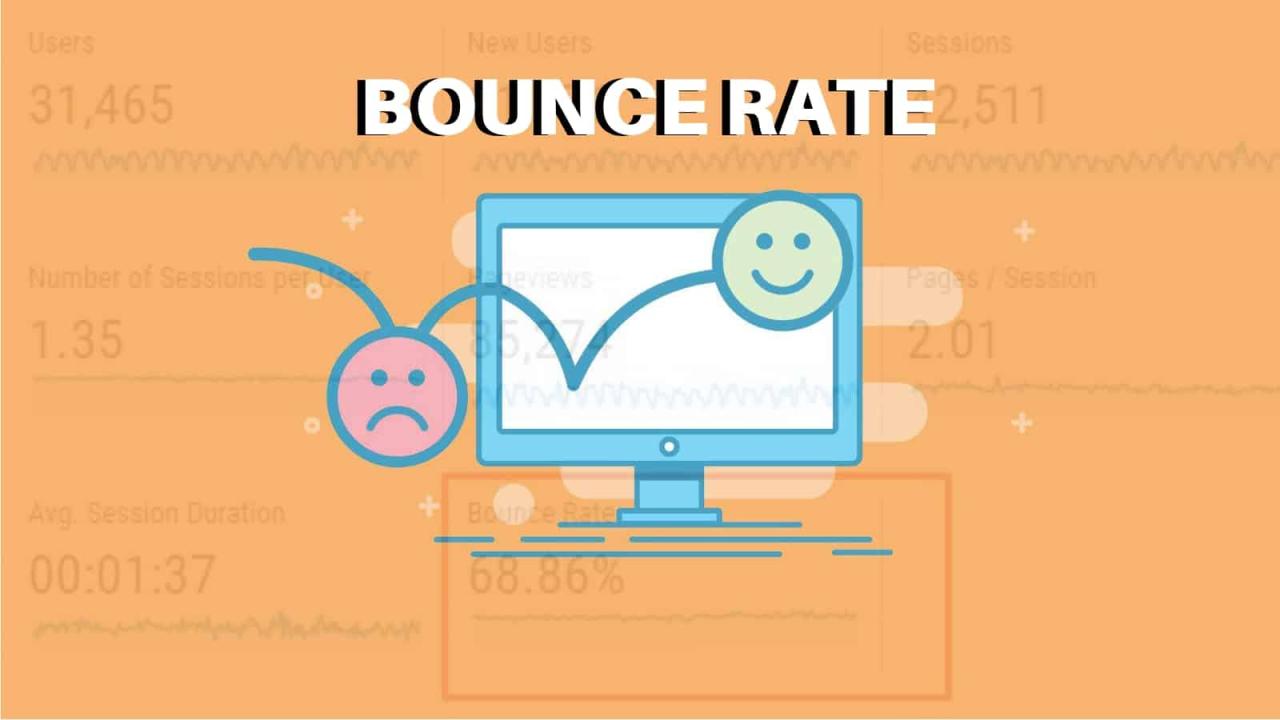
In conclusion, bounce rate is a multifaceted metric reflecting the overall health of your website. By understanding the factors that contribute to high bounce rates and implementing effective strategies for improvement, you can enhance user experience, boost engagement, and ultimately achieve your website goals. Remember, a low bounce rate isn’t the end goal, but a key indicator of a well-performing website that caters to its visitors.



